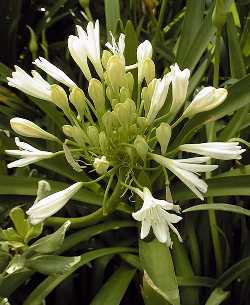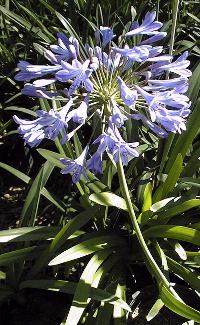Lily of the Nile
Synonym: Agapanthus praecox ssp orientalis
Family: Amaryllidaceae
The Lily of the Nile naturalizes easily in Phoenix. They take the summer heat more easily if they get some shade in summer. The summer flowers don't last very long but their thick strap shaped leaves are decorative the year around.
Warning: the sap is poisonous, do not ingest. It might cause temporary irritation of the skin.

Cultural Practices:
The Agapanthus needs regular watering during the hot weather period. It will grow fine in any soil, although does better in a soil rich in organic matter. Plant 1 to 2 feet apart depending on the variety. Feed 3 times a year in early spring, early summer and fall.
Blooming Habits:
The lily of the nile has flowers of various shades of blue or white during May-June. The flower stems are excellent for cut flowers. They are often coming at a time where there are not too many other flowers, and are an excellent resource.

|  |  |  |  |



